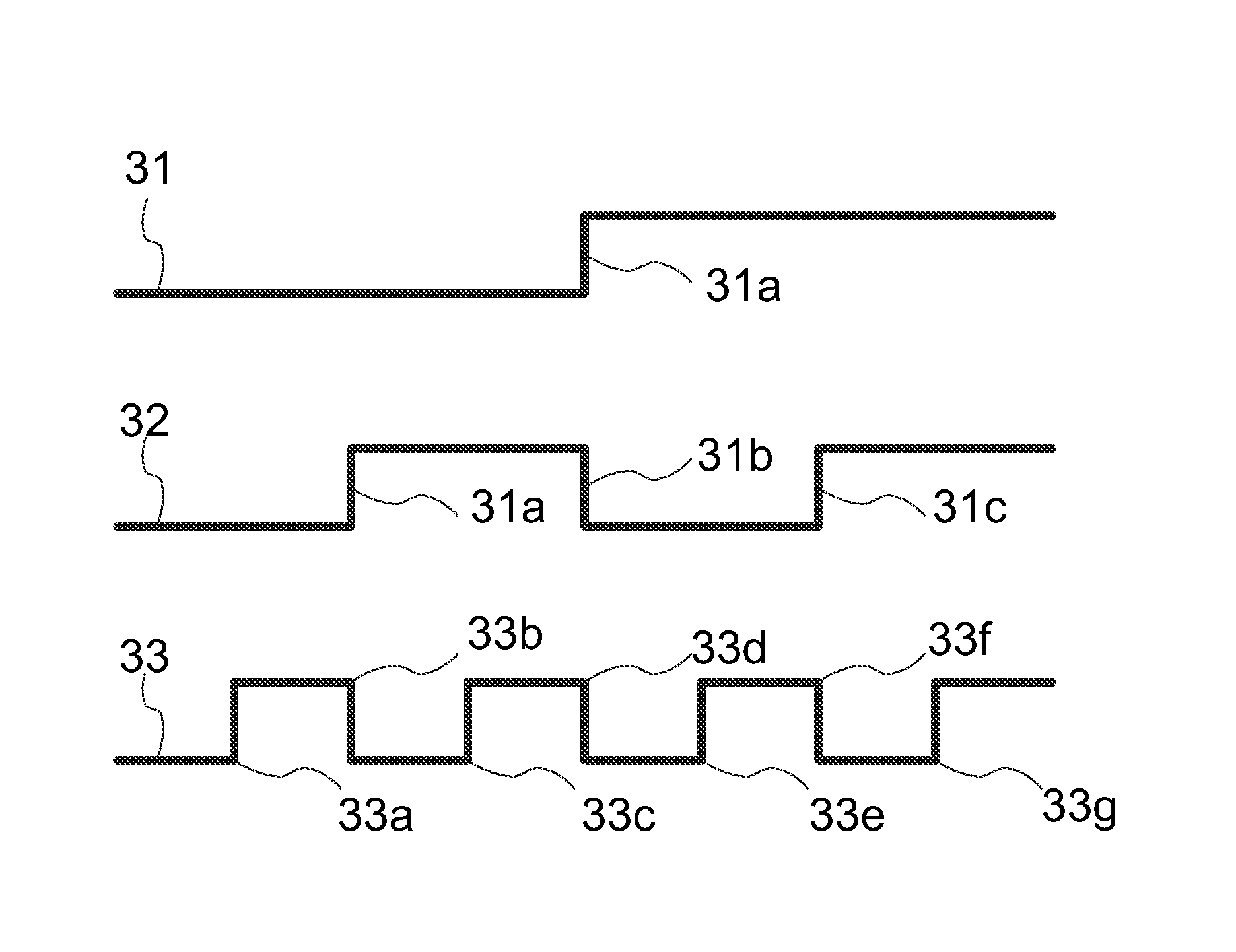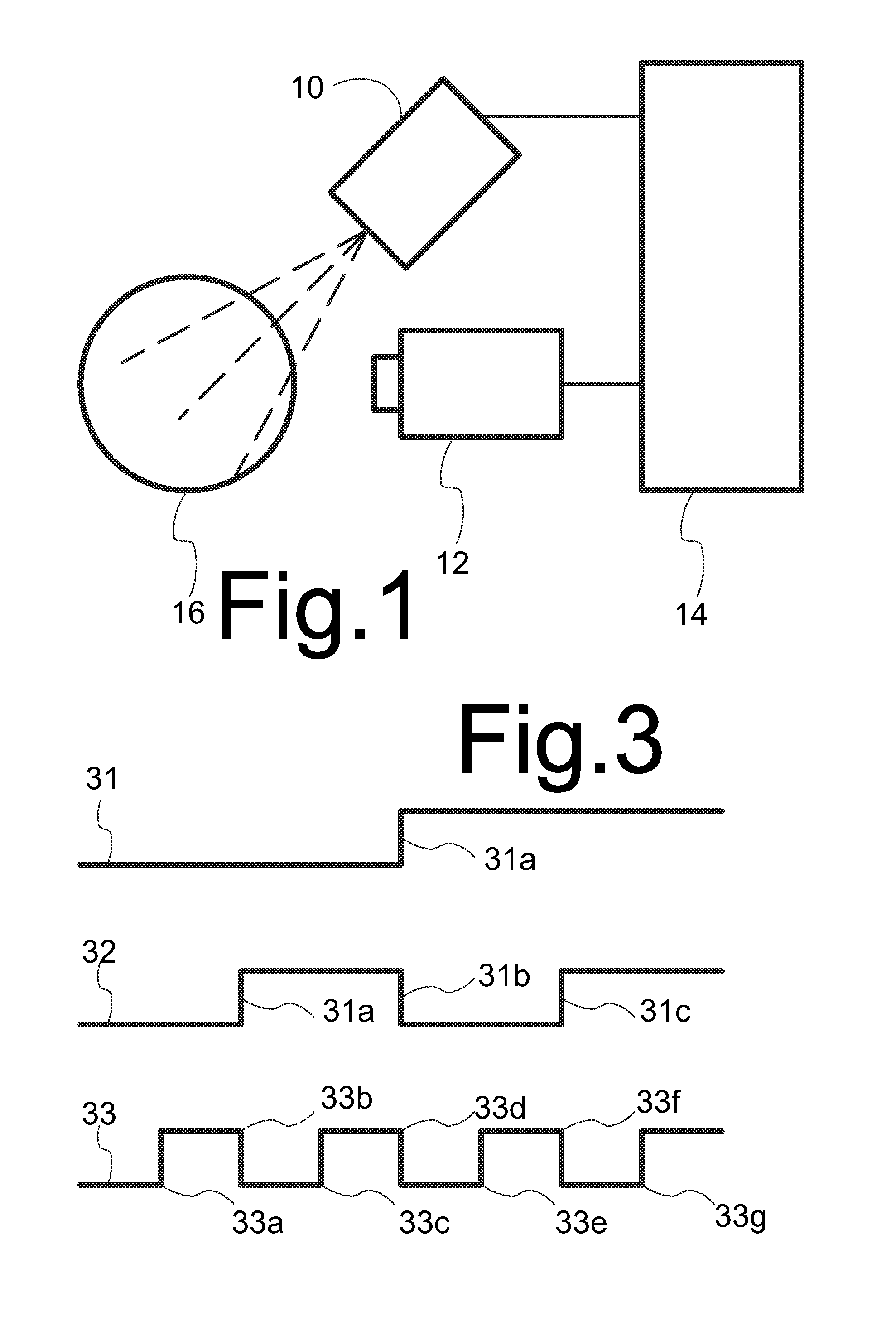3D scanner using structured lighting
a structured lighting and scanner technology, applied in the field of methods and systems for determining 3d information using structured lighting, can solve problems such as insufficient robustness of techniques
- Summary
- Abstract
- Description
- Claims
- Application Information
AI Technical Summary
Benefits of technology
Problems solved by technology
Method used
Image
Examples
Embodiment Construction
[0021]FIG. 1 shows a system for determining 3D surface position information, comprising a light source 10, a camera 12, and a processing system 14 coupled to light source 10 and camera 12. Light source 10 and camera 12 are both directed at an object 16 from different positions.
[0022]In operation, light source 10 projects a series of lighting patterns P(n) (n=0, 1, . . . ) onto object 16 and camera 12 captures images IM(n) of object 16 when object 16 is illuminated by the respective patterns. In the following, lighting patterns P(n) will be characterized by intensities in their cross-section with a plane transverse to rays from light source 10 (as used herein, “transverse” is used for not parallel to, for example perpendicular to). The three dimensional structure of the lighting pattern follows from this cross-section and the properties of light source 10. For example, in the case of a divergent light source, the lighting pattern comprises a collection of light rays in a continuum of...
PUM
 Login to View More
Login to View More Abstract
Description
Claims
Application Information
 Login to View More
Login to View More - R&D
- Intellectual Property
- Life Sciences
- Materials
- Tech Scout
- Unparalleled Data Quality
- Higher Quality Content
- 60% Fewer Hallucinations
Browse by: Latest US Patents, China's latest patents, Technical Efficacy Thesaurus, Application Domain, Technology Topic, Popular Technical Reports.
© 2025 PatSnap. All rights reserved.Legal|Privacy policy|Modern Slavery Act Transparency Statement|Sitemap|About US| Contact US: help@patsnap.com



